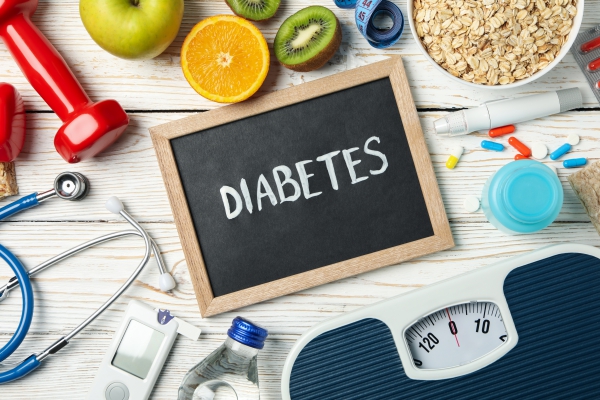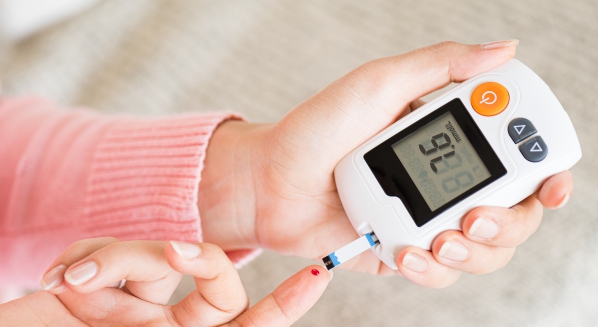T1DM, Type 1 diabetes, mellitus
Description : Type 1 diabetes mellitus (T1DM) is a chronic autoimmune condition. However, people with T1DM can
Article Details :
What is Type 1 diabetes mellitus?
Type 1 diabetes mellitus (T1DM) is a chronic condition that occurs most commonly in childhood although it can occur at any age. It is due to the body’s inability to produce insulin which is a hormone responsible for the regulation of blood sugar levels. This results from the destruction of beta cell which are found in the pancreas. These cells produce insulin in response to an increase in sugar levels in the blood.
This condition is autoimmune, that means that it is your body itself which destroys the beta cells. In contrast to people with type 2 diabetes mellitus, those with T1DM are usually lean and they depend on insulin injections as from the diagnosis is made. The Centers for Disease Control and Prevention (CDC) found that around 1 million of United States residents had T1DM in 2011. Approximately 1 in every 400-600 children and adolescents have T1DM. Around the world, it has been observed that more and more people are having the disease.
There is no cure for T1DM. However, people with the disease can have a normal life with regular insulin injection. The treatment for T1DM is lifelong.
Causes of Type 1 diabetes mellitus
The exact cause of T1DM is unknown. What is known is that it is an autoimmune condition whereby your own body attack your pancreas.
When you eat, your level of sugar rises in your blood. This stimulates your pancreas-which is a gland located in your abdomen- to secrete insulin. It is secreted from specific cells called beta cells. The role of insulin is to regulate the amount of sugar in the bloodstream by increasing the uptake of sugar by other cells in the body.
In T1DM, your body makes antibodies which attack beta cells in your pancreas. Therefore, your pancreas is no longer able to produce insulin. This results in a build-up of sugar in the bloodstream.
Genetics has a big role to play in T1DM. Studies have shown that there are certain genes that may be responsible for the development of T1DM.
Some environmental factors such as infections with certain viruses (enterovirus, mumps, rubella, coxsackievirus B4) can also trigger the autoimmune destruction of beta cells.
Risk factors
There are certain factors that may increase your risk of having T1DM. These include:
- Having another autoimmune disease such as Grave’s disease, Addison’s disease or Hashimoto thyroiditis
- Having a family history of T1DM
- Having certain genes which are associated with T1DM
- Being aged between 4 to 14 years old
Signs and symptoms of Type 1 diabetes mellitus
T1DM can present with a variety of signs and symptoms including:
- Frequent urination
- Excessive thirst
- Excessive hunger
- Decreased energy
- Nausea
- Blurry vision
- Weakness
- Muscle cramps
- Weight loss
In certain cases, people with T1DM can present as an emergency called diabetic ketoacidosis (DKA). This is a life-threatening complication of T1DM in which blood sugar levels increase at high levels. The liver breaks down fat into a product called ketone which makes the blood acidic. DKA is a common first presentation whereby the diagnosis of T1DM is made. It may be triggered by an infection or stress. The signs and symptoms of DKA are:
- Confusion
- Deep and rapid breathing
- Dry skin and mouth
- Fruity-smelling breath
- Headache
- Abdominal pain
- Nausea and vomiting
As mentioned earlier, it is an emergency and requires immediate treatment by a healthcare professional as it can be life-threatening.
Making a diagnosis
Blood tests are used to make the diagnosis of T1DM. These include:
- Random blood sugar: This involves taking a sample of blood at any random moment to check for the blood sugar level. If the value is equal to or higher than 200 mg/dl (11.1 mmol/l) this means that you have diabetes.
- Fasting blood sugar: Before taking a blood sample from you, you will be required to keep fasting overnight. If the fasting blood sugar is less than 100 mg/dl (5.6 mmol/l) it is considered normal. If it is between 100 to 125 mg/dl (5.6 to 6.9 mmol/l), it is said that you are pre-diabetic. If the value is 126 mg/dl (7 mmol/l) or above, on 2 different occasions, the diagnosis of diabetes is made.
- Glycated hemoglobin (A1C) test: This value illustrates the average on your blood sugar levels for the past 3 months. It also reveals how well your blood sugar levels have been under control. If it is 6.5% or greater on 2 different occasions, you have diabetes.
- Blood ketones: This test involves the measurement of the level of ketones in the blood. This can help in making the diagnosis of DKA.
Treatment of Type 1 diabetes mellitus
T1DM requires lifelong insulin treatment. Allfollowing are important in the management of T1DM:
- Tight glycemic control: This is important to prevent the appearance of complications Read more




